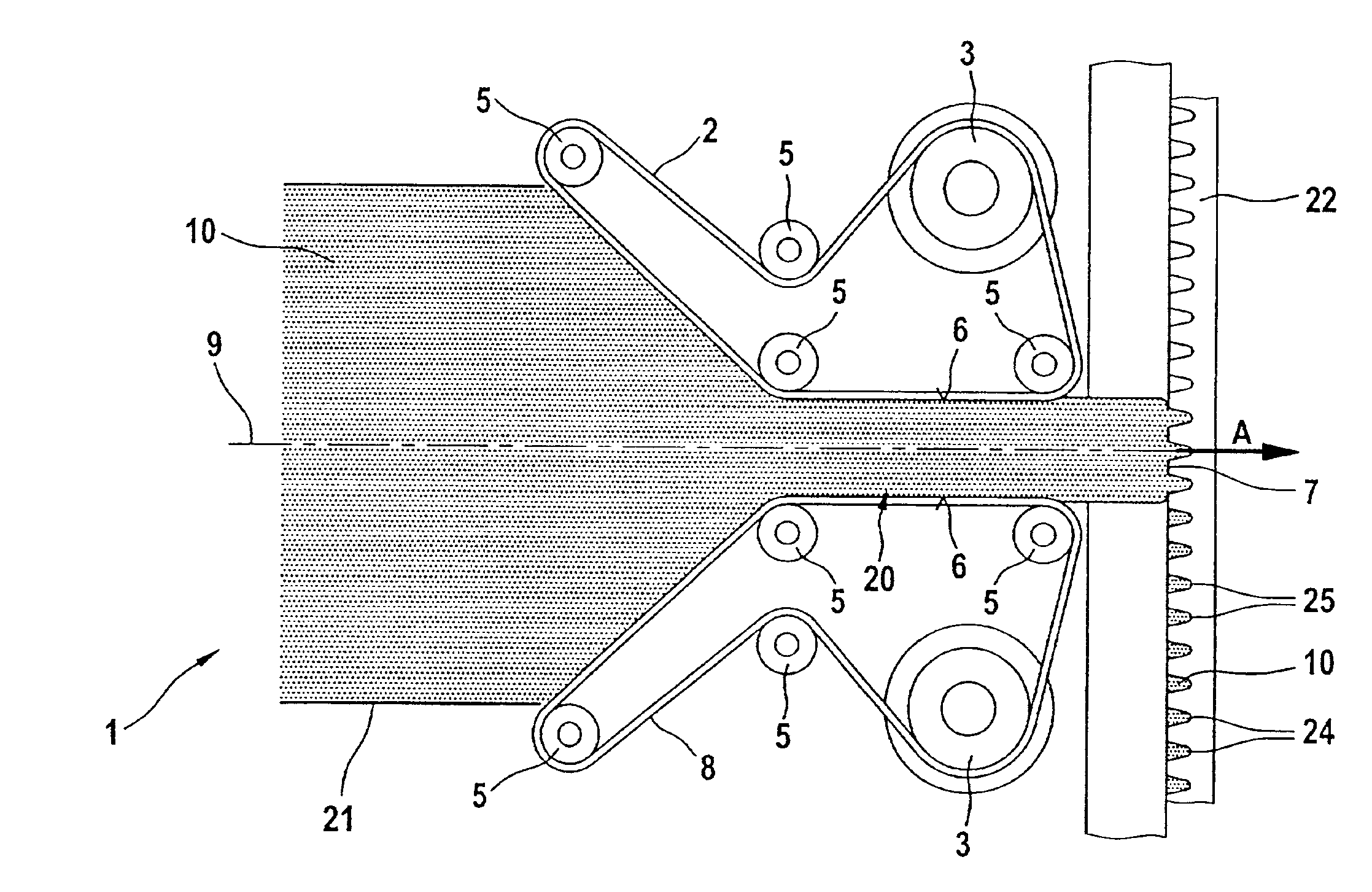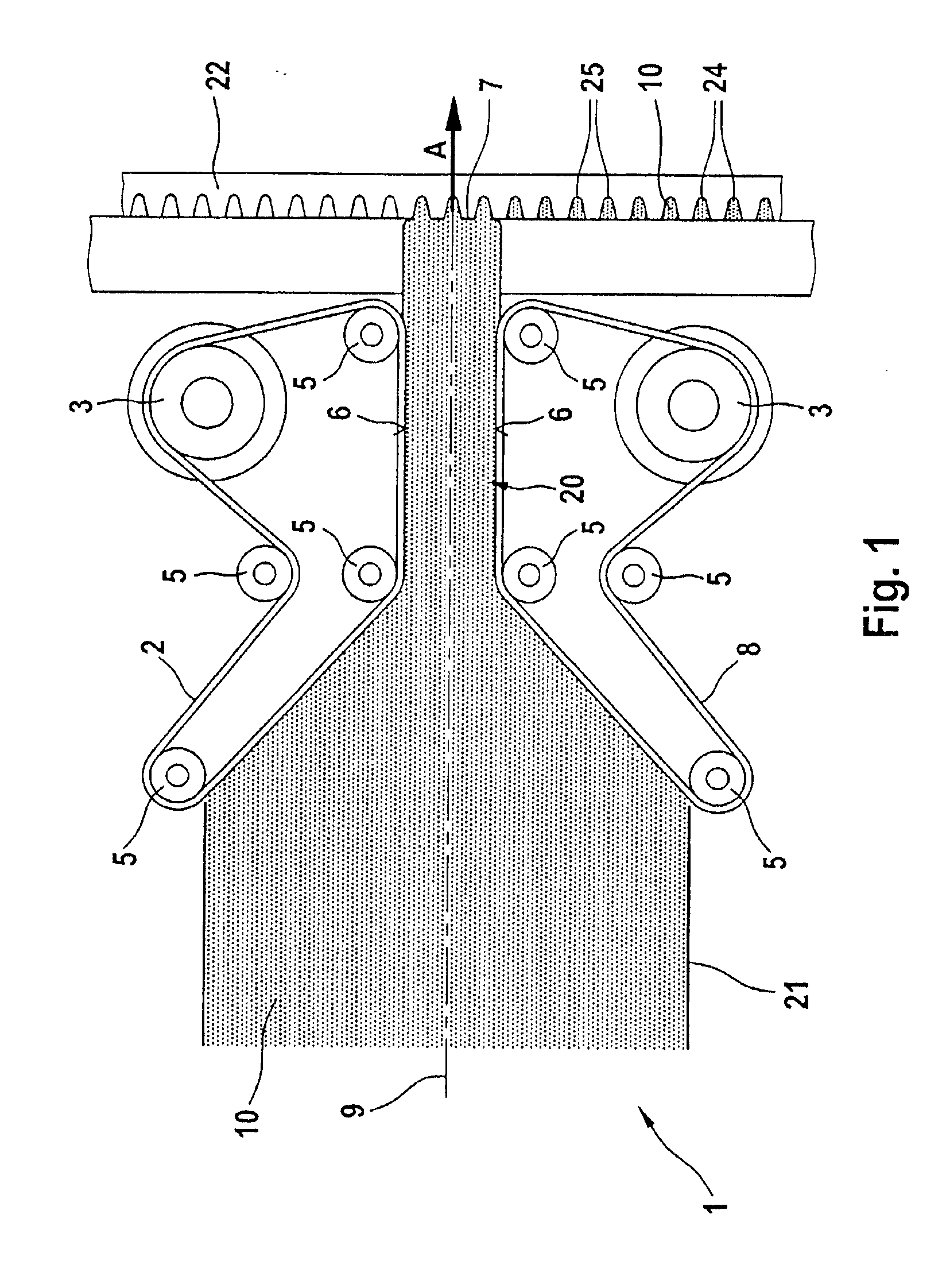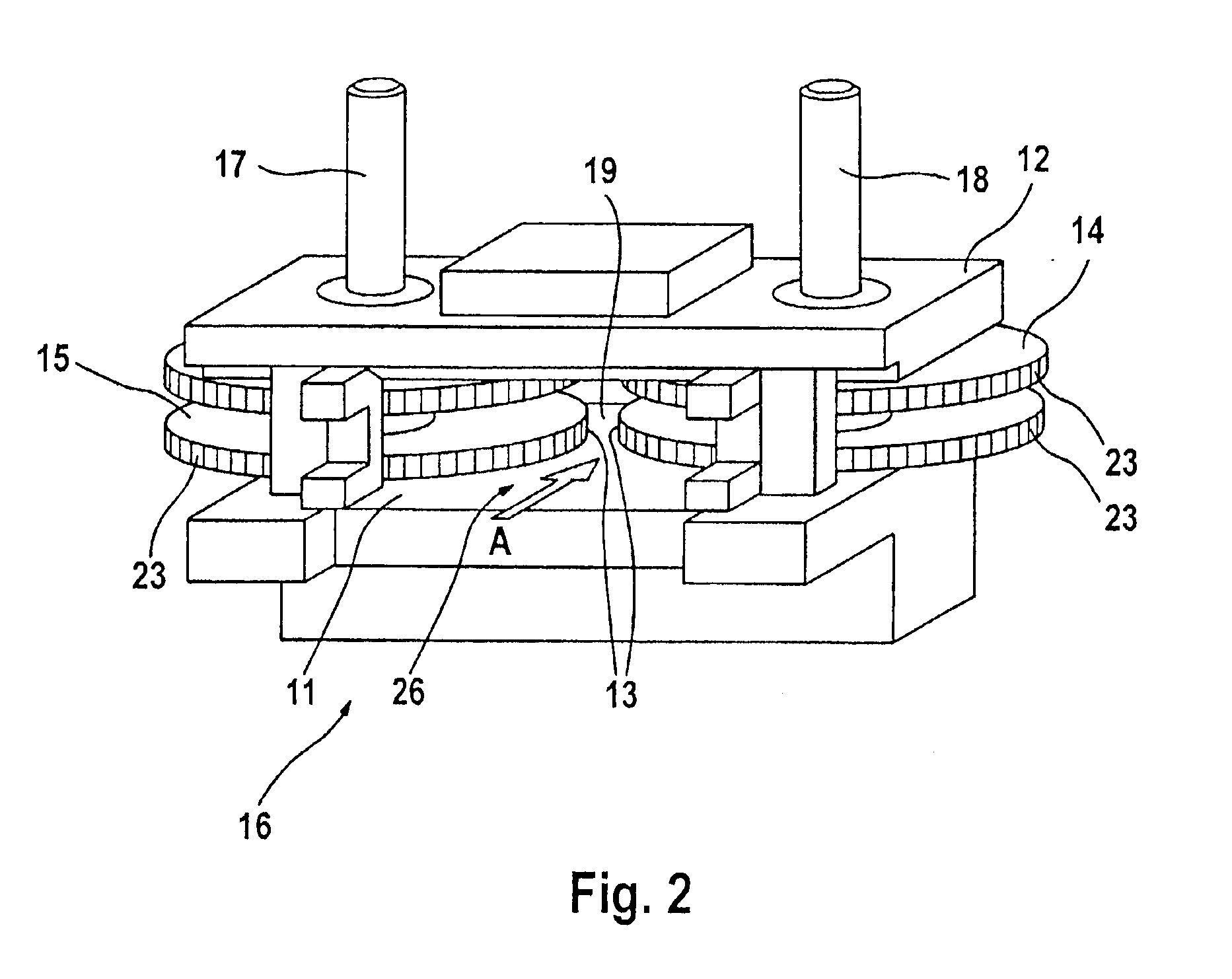Methods and devices for the manufacture of bristle products
a technology of bristle and products, applied in the field of methods and devices for the manufacture of bristle products, can solve problems such as adverse effects on process safety and product quality, and achieve the effects of enhancing process safety, reducing susceptibility to trouble, and increasing product quality
- Summary
- Abstract
- Description
- Claims
- Application Information
AI Technical Summary
Benefits of technology
Problems solved by technology
Method used
Image
Examples
first embodiment
FIG. 1 shows in a schematic sectional view an active feed unit 1, i.e., a driven bristle conveying device, including an upper conveyor belt 2 and a lower conveyor belt 8, each constructed as a driven flat belt of elastomer plastic.
The upper conveyor belt 2 and the lower conveyor belt 8 are arranged in mirror symmetry about an axis of symmetry 9. The architecture of the conveyor belts 2, 8 is therefore described only once.
The symmetrical conveyor belts 2, 8 each include one drive wheel 3 and four deflection pulleys 5. The conveyor belt 2, 8 is wrapped around the deflection pulleys 5 in such fashion that a straight-line tensioned pressure surface 6 parallel to the axis of symmetry 9 is produced between the two deflection pulleys 5. Arranged in spaced relation to the pressure surface 6 and the line of symmetry 9 is the drive wheel 3 around which the conveyor belt 2, 8 is wrapped for nearly half the wheel circumference. Adjacent to the drive wheel 3 is another deflection pulley 5 which ...
second embodiment
FIG. 2 shows a perspective view of an active feed unit 15. The feed unit 15 of this embodiment comprises a base plate 11 and a cover plate 12. The base plate 11 and the cover plate 12 are made from solid, machined metal. Rotatably arranged between the base plate 11 and the cover plate 12 are a right-hand gear 14 and a left-hand gear 15, each having grooves 23 into which the bristles 10 slide to be conveyed in the direction of arrow A. The two gears 14, 15 are driven by two synchronized drive shafts and are not in meshing engagement with each other, but rather, a gap 19 is provided between the right-hand gear 14 and the left-hand gear 15 through which precut lengths of upstanding bristles (not shown), also designated as filament clusters or strands, which are arranged loosely in a supply duct, are routed directly to a picker segment for picking up the tufts. The gears 14, 15 form the lateral boundaries for the gap 19 and serve as pressure surfaces 13, producing also in this area, sim...
PUM
 Login to View More
Login to View More Abstract
Description
Claims
Application Information
 Login to View More
Login to View More - R&D
- Intellectual Property
- Life Sciences
- Materials
- Tech Scout
- Unparalleled Data Quality
- Higher Quality Content
- 60% Fewer Hallucinations
Browse by: Latest US Patents, China's latest patents, Technical Efficacy Thesaurus, Application Domain, Technology Topic, Popular Technical Reports.
© 2025 PatSnap. All rights reserved.Legal|Privacy policy|Modern Slavery Act Transparency Statement|Sitemap|About US| Contact US: help@patsnap.com



